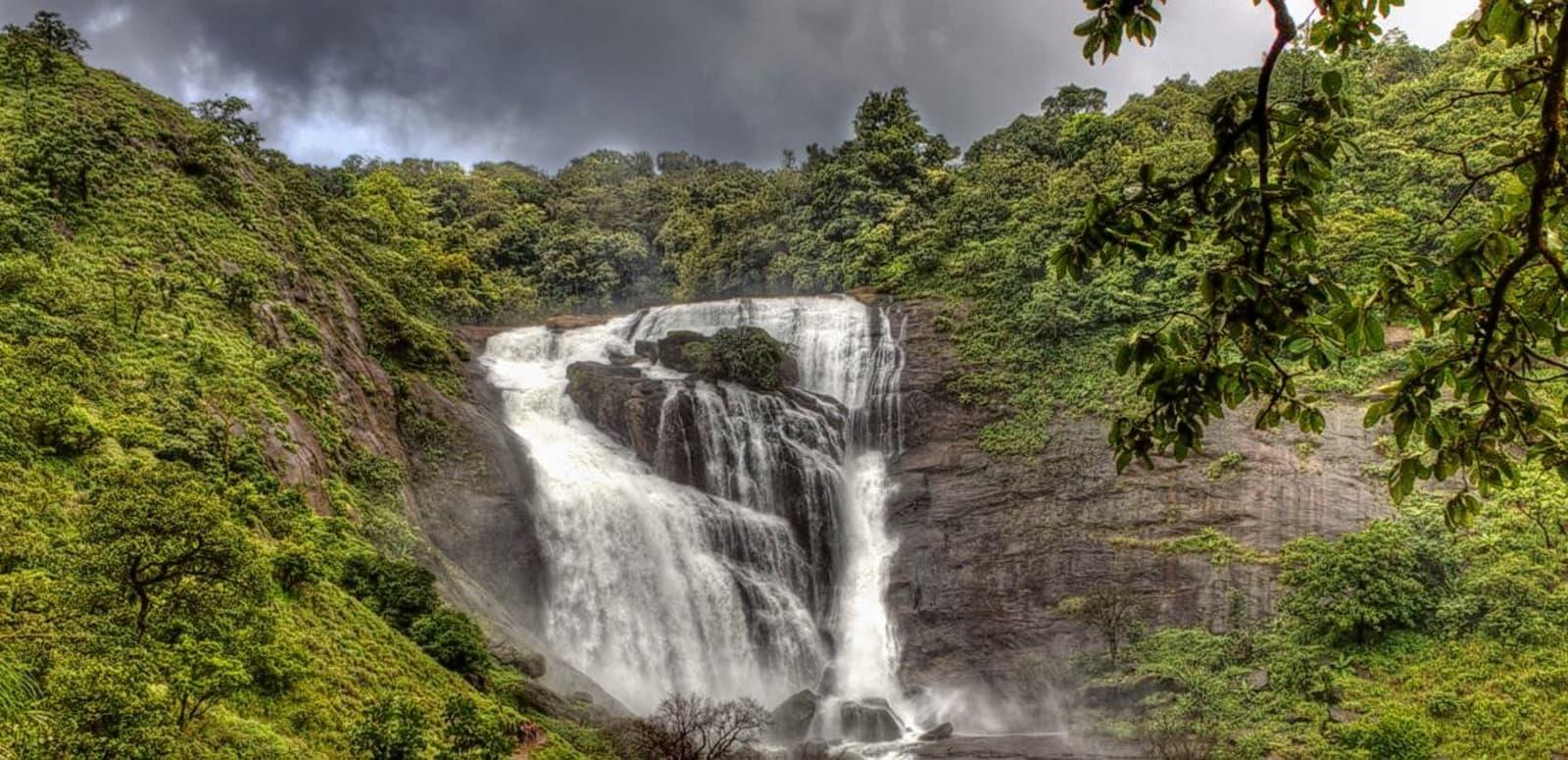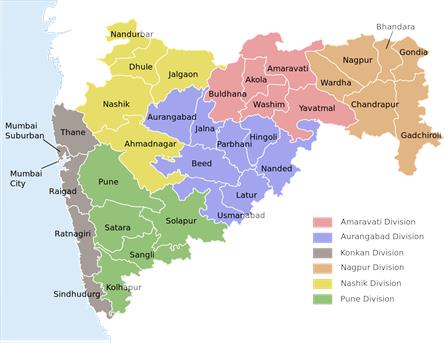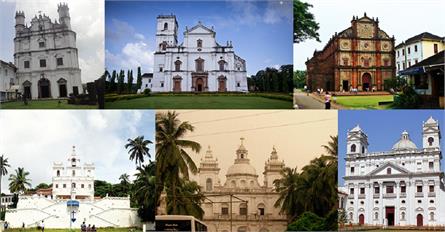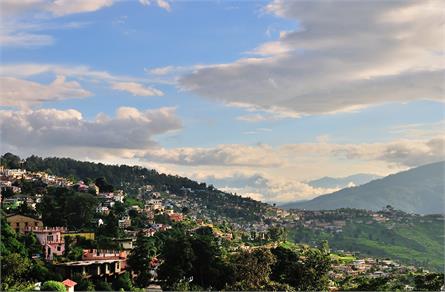"Western Ghats: India's Ecological Treasure"

Western Ghats (Ghat means mountain range) are basically the mountain ranges that are renowned for their rich and unique flora and fauna. This mountain range is known by the name Sahyadri in Maharashtra (Northside) and Sahya Parvatham in Kerala. The northern parts of the Western Ghats and Arabian Sea are called the Konkan Coast. The central portion of the coastal plain is known as Kanara, and the southern portion of the coastal plain is known as the Malabar region (Malabar Coast).
The foothill region of the Ghats in Maharashtra is known as Desh, and the eastern foothills of central Karnataka state are called Malanadu. In the south, the range is known as the Nilgiri Malai in Tamil Nadu.
The Western Ghats has very large proportion of flora and fauna. These flora and fauna are endemic to this region. One of the important facts of these ghats is that they are older than the Himalayas. The western ghats influence the weather of the Indian Monsoon by intercepting the rain-laden monsoon winds. These winds sweep in from the southwest during late summer.
Various Areas in the Western Ghats
There are thirty-nine areas in the Western Ghats, and these areas are Wildlife sanctuaries, national parks, and reserve forests. These areas were designated as World Heritage Sites in 2012.
The mountain range starts from the Tapti River (south). This range runs 1600 km through Gujarat, Maharashtra, Karnataka, Goa, Kanyakumari, Kerala, and Tamil Nadu, ending at Marunthuvazh Malai. The Western block the southwest monsoon winds from reaching the Deccan Plateau, and the average elevation is around 1200m. The area of Western Ghats is one of the world's ten hottest biodiversity hotspots. This area has approx 7,402 species of flowering plants, 139 species of mammals, 1814 flowering plants, 227 species of reptiles, 179 species of amphibians, 290 freshwater fishes, and 6,000 species of insects. A maximum of three hundred twenty-five threatened species (global) occur in the western ghats.
The Western Ghats is a vast mountain range that stretches over 1,600 kilometers along the western coast of India, and it encompasses several states and regions. To facilitate conservation efforts and manage its ecological importance, the Western Ghats has been divided into multiple designated areas and zones. These include:
1. Wildlife Sanctuaries and National Parks
Within the Western Ghats, numerous wildlife sanctuaries and national parks have been established to protect the region's diverse flora and fauna. These include the Silent Valley National Park, Periyar Tiger Reserve, Bhadra Wildlife Sanctuary, and many others.
2. Forest Reserves and Protected Areas
In addition to biosphere reserves, wildlife sanctuaries, and national parks, there are several other forest reserves and protected areas in the Western Ghats where conservation efforts are focused.
3. Cultural and Indigenous Areas
The Western Ghats is not just about biodiversity; it also has cultural and indigenous significance. Indigenous communities inhabit some parts of the Western Ghats, and their areas are recognized for their cultural and ecological importance.
4. Rivers and Watershed Areas
The Western Ghats is the source of several major rivers, and the watersheds and catchment areas of these rivers are crucial for the region's water supply and are thus of environmental significance.
The exact number of areas and reserves within the Western Ghats may vary over time due to changes in designations, boundaries, and conservation efforts. Therefore, it's essential to consult current government records and conservation organizations for the most up-to-date information on the specific areas and zones within the Western Ghats.
Biodiversity Hotspots
The Western Ghats is a biological hotspot, home to an astounding variety of plant and animal species, many of which are found nowhere else on Earth. This exceptional diversity is due to its unique geographical location, which acts as a bridge between the Indian subcontinent and the island nations of Sri Lanka and the Maldives.
The Western Ghat is home to several ecologically rich regions known for their exceptional biological diversity. These hotspots within the Western Ghats are characterized by unique ecosystems, a wealth of endemic species, and a high degree of ecological importance. Let's explore each of these hotspots in more detail:
1. Agasthyamalai Biosphere Reserve
Location: Southern part of the Western Ghats.
Named after the Agastya Malai (Agastya Hill), this biosphere reserve boasts a diverse range of ecosystems, including tropical forests, grasslands, and wetlands. It is known for its unique flora and fauna, with a high degree of endemism.
Notable Species: Various species of orchids, amphibians, reptiles, and the rare lion-tailed macaque are found here.
2. Nilgiri Biosphere Reserve
Location: Nilgiri Hills in the Western Ghats.
The Nilgiri Biosphere Reserve encompasses several protected areas and wildlife sanctuaries, including Mudumalai, Mukurthi, and Wayanad. It is characterized by its high-altitude shola-grassland ecosystems and is home to several endemic species.
Notable Species: Nilgiri tahr, lion-tailed macaque, Nilgiri langur, and numerous bird species.
3. Sahyadri-Konkan
Location: Northern Western Ghats and the Konkan coast.
This region is known for its lush forests, rich plant diversity, and a variety of wildlife species. It includes several protected areas and wildlife sanctuaries.
Notable Species: Indian giant squirrel, Indian pangolin, and various species of amphibians and reptiles.
4. Silent Valley National Park
Location: Palakkad district, Kerala.
Silent Valley is a pristine tropical rainforest known for its unique biodiversity. The dense forest is rich in endemic species and is famous for its relative silence due to the scarcity of cicadas.
Notable Species: Lion-tailed macaque, Malabar giant squirrel, and a wide array of plant species.
5. Periyar Tiger Reserve
Location: Kerala.
This reserve is famous for its diverse wildlife and is home to the Bengal tiger. It encompasses the lush forests of the Western Ghats and includes the scenic Periyar Lake.
Notable Species: Bengal tiger, Indian elephant, sambar deer, and several bird species.
6. Gulf of Mannar Biosphere Reserve
Location: Coastal areas of Tamil Nadu and Sri Lanka.
While primarily a marine and coastal biosphere reserve, it includes some coastal areas of the Western Ghats. It is known for its rich marine biodiversity and coral reefs.
Notable Species: Dugong (sea cow), various species of marine turtles, and numerous marine fish species.
These Western Ghats hotspots are vital for biodiversity conservation, and they play a crucial role in protecting unique ecosystems and endemic species. Conservation efforts in these regions are essential to safeguard their ecological integrity and ensure the survival of numerous rare and threatened species.
Endemic Species
One of the most striking features of the Western Ghats is its high level of endemism. Many species in this region are found nowhere else on the planet. The lion-tailed macaque, the Malabar giant squirrel, and the Nilgiri tahr are just a few examples of charismatic endemic species that call these mountains home. These endemics are not only fascinating from a biological perspective but also underscore the ecological importance of preserving the Western Ghats.
Endemic species are those that are found exclusively in a particular geographic region and are not naturally found anywhere else on Earth. The Western Ghats, a mountain range along the western coast of India, is renowned for its high level of endemism. This means that it is home to a significant number of plant and animal species that are unique to this region.
Here's a closer look at the endemic species of the Western Ghats:
1. Flora Endemism
- Plants: The Western Ghats boasts a remarkable diversity of plant life, with a substantial number of plant species found nowhere else. Examples include the Myristica swamps, which are home to unique plant species such as Myristica fatua, a type of nutmeg tree, and the critically endangered Myristica dactyloides.
- Orchids: The Western Ghats is particularly rich in orchid diversity, with many endemic species. These delicate and often beautiful flowering plants add to the region's floral uniqueness.
2. Fauna Endemism
a. Mammals
Several iconic mammal species in the Western Ghats are endemic. The lion-tailed macaque, a distinctive primate with a tufted tail and black mane, is one such example. Other notable endemics include the Nilgiri tahr, a large mountain goat, and the Malabar giant squirrel.
b. Amphibians
The Western Ghats is often referred to as the "Amphibian Capital of the World" due to its incredibly high amphibian diversity. Many species of frogs, toads, and caecilians found here are endemic. The purple frog (Nasikabatrachus sahyadrensis), a burrowing frog with a unique appearance, is a famous example.
c. Reptiles
The region is also rich in endemic reptiles. The critically endangered Malabar pit viper and the Malabar spiny dormouse snake are just a couple of examples.
d. Birds
While the Western Ghats is not as renowned for avian endemism as some other regions, it still hosts several bird species that are unique to the area. Examples include the Malabar parakeet and the Nilgiri pipit.
3. Invertebrates
The Western Ghats is also home to an astonishing array of endemic invertebrates, including butterflies, moths, and insects. These often overlooked species contribute to the region's overall biodiversity.
Why are Endemic Species Important?
Endemic species are of great ecological and scientific importance for several reasons:
1. Indicators of Biodiversity
Endemic species are indicators of the uniqueness and diversity of a particular ecosystem. They highlight the region's ecological distinctiveness.
2. Conservation Significance
Protecting endemic species helps preserve the overall biodiversity of a region. Loss of these species can disrupt ecosystems and have cascading effects.
3. Scientific Insights
Endemic species provide valuable insights into evolution, adaptation, and speciation processes. Studying them can help us better understand how life has diversified on Earth.
4. Ecotourism and Education
Endemic species can also be a draw for ecotourism, promoting the conservation of natural habitats and providing educational opportunities for visitors.
Protecting these endemics is not just about preserving the Western Ghats' biodiversity; it's also about ensuring the survival of species found nowhere else on our planet.
A Water Tower of the South
The Western Ghats plays a crucial role in India's water supply, earning it the nickname "the water tower of the south." The numerous rivers that originate in these mountains provide water to millions of people in the southern states of India. These rivers also support agriculture and are vital for the region's biodiversity. Ensuring the health of the Western Ghats is thus essential for the sustainable development of the entire region.
The Lifeline Rivers of the Western Ghats
The Western Ghats is the birthplace of numerous rivers that flow through the southern states of India. Some of the prominent ones include the Godavari, Krishna, Kaveri, and Tungabhadra rivers. These rivers originate in the lush forests and verdant slopes of the Western Ghats, making the region a primary source of fresh water for millions of people.
Water for Agriculture and Livelihood
The agricultural sector in southern India heavily relies on the water resources originating from the Western Ghats. The fertile plains downstream benefit from the nutrient-rich sediment carried by these rivers, supporting the cultivation of a wide range of crops. Rice, sugarcane, and coffee are just a few examples of crops that thrive in this region, contributing significantly to India's agricultural output.
Hydropower Generation
In addition to agricultural benefits, the rivers cascading from the Western Ghats provide a substantial source of hydropower generation. Dams and reservoirs are strategically located along these rivers to harness the water's potential energy, contributing to the region's electricity needs.
Biodiversity and Water Resources
The unique ecology of the Western Ghats also plays a role in maintaining the quality and quantity of water resources. The dense forests act as natural water filters, ensuring that the water flowing downstream is relatively clean and free from pollutants. Moreover, the forests help regulate the flow of water, reducing the risk of flooding during monsoon seasons and ensuring a steady supply during dry periods.














